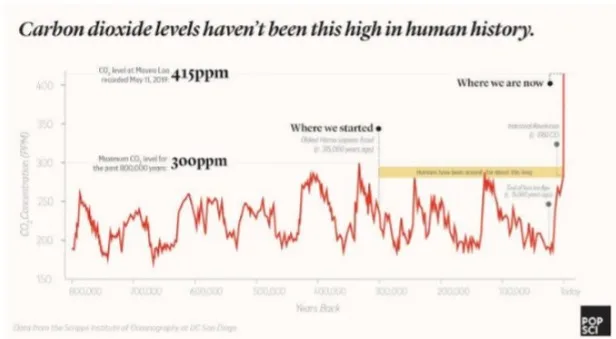By: Naeem Ahmad Nagoo
Global warming, once a term reserved for scientific circles, is now a pressing issue that dominates headlines worldwide. It represents a climatic challenge and an existential threat to human life and the environment. The Earth’s average surface temperature has risen significantly over the past century due to increased concentrations of greenhouse gases, mainly carbon dioxide, methane, and nitrous oxide. These emissions are the byproduct of industrial activities, deforestation, and the burning of fossil fuels, practices that fuel our economy and imperil our future.
At the heart of global warming lies the greenhouse effect. Solar radiation enters the Earth’s atmosphere and is either absorbed or reflected. Greenhouse gases trap part of this radiation, warming the planet. While this effect is natural and essential for life, human activities have dramatically intensified it, leading to dangerous warming trends. This has far-reaching consequences: melting polar ice caps, rising sea levels, more frequent and intense extreme weather events, and disrupted ecosystems. Nations such as the Maldives and Bangladesh are grappling with coastal flooding, while wildfires rage in places as diverse as California, Australia, and the Mediterranean.
For the citizens, these shifts may seem distant yet, their impact is rapidly becoming local. The frequency of heat waves is increasing, droughts are intensifying, and agricultural yields are suffering. In urban areas, the “urban heat island” effect, where cities experience higher temperatures than surrounding areas due to concrete structures and limited vegetation—compounds the issue. This is not just an environmental crisis, it is a social and economic one. Poorer communities, which often contribute the least to greenhouse gas emissions, are hit the hardest.
Despite these sobering realities, there is hope. Solutions to mitigate global warming are available and within reach. Renewable energy sources like solar, wind, and geothermal power plants are gaining momentum, offering cleaner alternatives to fossil fuels. Energy efficiency in homes, factories, and transportation can drastically cut emissions. Reforestation efforts, carbon capture technologies, and lifestyle changes such as reducing meat consumption can also contribute to reducing our carbon footprint. On a policy level, international agreements such as the Paris Agreement aim to limit global warming to 1.5°C above pre-industrial levels, a target that though challenging, is essential for avoiding catastrophic outcomes.
However, time is not on our side. The longer we delay decisive action, the more difficult and expensive it will be to reverse the damage. Policymakers must prioritize climate action in national agendas, businesses must adopt sustainable practices, and citizens must advocate for and participate in green initiatives. Every effort, no matter how small, can contribute to a global solution.
Global warming is not a problem for future generations—it is a crisis we face today. The world must act with urgency and unity to turn the tide. The alternative is unthinkable, for the planet will continue warming, ecosystems will continue collapsing, and the lives we know will be forever altered. In the words of climate activists, there is no planet B. The time to act is now.
akramiiim@gmail.com




